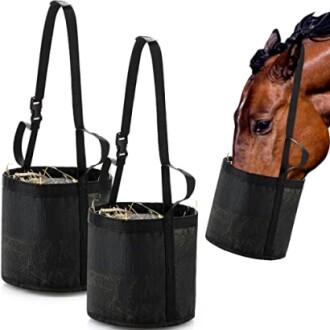
Mastering the Basics: A Horse Riding Safety Guide
- Always wear appropriate safety gear including helmets and gloves.
- Regularly inspect and maintain your riding equipment.
- Understand and practice safe riding techniques.
- Be aware of your horse’s behavior and comfort levels.
- Stay hydrated and bring necessary supplies on trail rides.
Horseback riding can be an exhilarating experience, but safety should always be your top priority. Whether you're a seasoned rider or just starting out, following essential safety guidelines will help you enjoy your time with your horse while minimizing the risk of injury. In this guide, we will explore crucial safety tips and recommend some top-notch gear that every rider should consider having, ensuring that you and your horse are protected on every ride.
Essential Horse Riding Safety Tips
1. Always Wear Proper Safety Gear
One of the most important aspects of horseback riding safety is wearing the proper gear. Here’s a list of essential items to include in your riding apparel:
- Helmet: Protects your head from potential falls or impacts.
- Riding Gloves: Enhances grip and protects your hands.
- Long Pants: Provides protection against chafing and injuries.
- Boots: Offers support and prevents your foot from slipping through the stirrup.
2. Inspect Your Equipment Regularly
Before mounting your horse, always check your riding gear and tack for any signs of wear and tear. Ensure your saddle is properly fitted and the bridle is in good condition.
3. Know Your Horse
Understanding your horse's behavior is essential for ensuring a safe ride. Be attentive to signs of discomfort or anxiety, such as tail swishing or ear pinning.
4. Stay Aware of Your Surroundings
Always pay attention to what’s happening around you. This includes obstacles, other riders, and even the weather conditions. Keeping your head up can prevent accidents.
5. Practice Safe Riding Techniques
Maintain a proper riding posture, keep your legs in a secure position, and avoid sudden movements that may startle your horse. Stay calm and composed.
Recommended Safety Gear
Investing in high-quality safety gear is crucial to ensure adequate protection. Below are some of the top recommendations you should consider:
Equestrian Set - Helmet and Gloves
A complete set ensuring excellent protection and comfort during riding and training, featuring a high-strength helmet and anti-slip gloves.
Learn MoreUnderstanding Your Equipment
To maximize your safety when horseback riding, it’s important to know how to use and maintain your equipment.
| Equipments | Importance | Maintenance Tips |
|---|---|---|
| Helmet | Protects your head from injuries. | Inspect for cracks; replace every 5 years. |
| Riding Gloves | Enhances grip and comfort. | Wash regularly; check for wear. |
| Boots | Prevents slipping and foot injuries. | Ensure a proper fit; inspect for damage. |
Feeding and Care for Your Horse
Along with safety gear, ensuring proper care for your horse is essential. This includes nutrition and hydration. One effective product to assist with feeding is:
Sumind 2 Pcs Horse Feed Bag
Heavy-duty feed bags designed to reduce anxiety during feeding, featuring adjustable straps for an optimum fit.
Learn MoreConclusion
By mastering the basics of horseback riding safety, you ensure not only your own wellbeing but also that of your horse. Equip yourself with the necessary gear, stay vigilant about your surroundings, and maintain a good relationship with your horse. Through safe practices and proper equipment, you can enjoy a fulfilling and secure riding experience.
Tips for Beginners
- Start with a well-trained horse and instructor.
- Practice in a safe, controlled environment.
- Never ride alone; always have a companion.
- Take regular breaks to prevent fatigue for both you and your horse.
- Stay relaxed and maintain a positive attitude.


